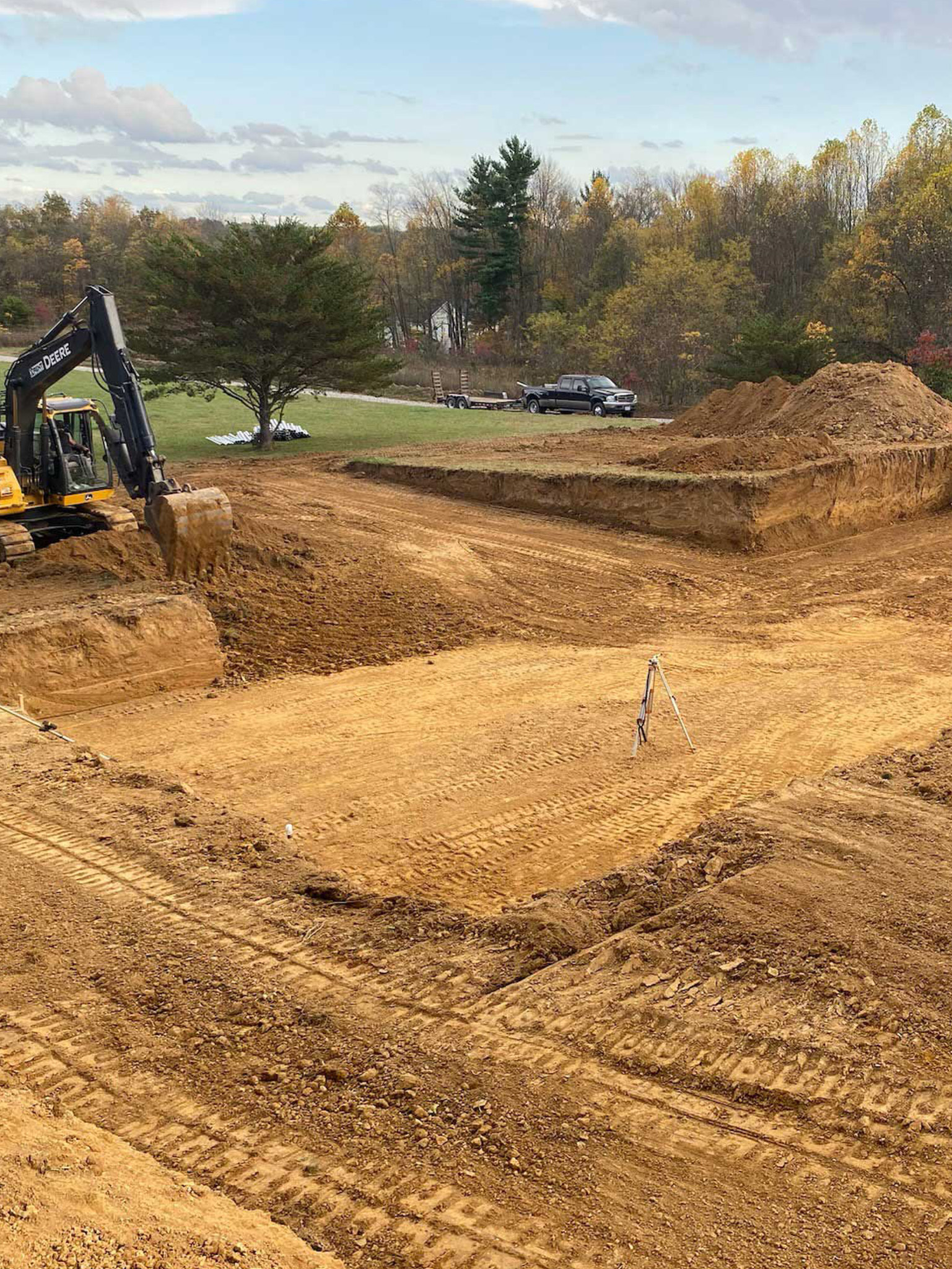Lancaster Trenching - Expert Trenching Solutions in Lancaster, Ohio
Lancaster Trenching - Expert Trenching Solutions in Lancaster, Ohio
Blog Article
Introducing the Art of Excavation: Pro Tips for Safe and Productive Digging
As dirt is transformed and earth is relocated, the details of excavation reveal themselves, demanding an eager understanding of equipment, dirt composition, safety procedures, and environmental factors to consider. The competence needed to navigate these elements efficiently can mean the distinction between an effective excavation task and a potential calamity.
Significance of Correct Devices
To guarantee the safety and security and performance of any kind of excavation job, utilizing the proper devices is paramount. The right devices not only boost productivity yet likewise alleviate risks related to digging. Excavation projects differ in scope and complexity, varying from tiny residential landscape design work to large-scale construction tasks. Regardless of the task size, having the appropriate tools can make a considerable distinction in the end result.
Excavators are fundamental pieces of machinery in any excavating procedure. These versatile devices come in different dimensions to fit various project requirements. Miniature excavators are excellent for smaller sized jobs, while larger excavators tackle much more extensive tasks efficiently. Backhoes are another vital equipment type, combining the features of a loader and an excavator in one equipment. They are useful for jobs requiring adaptability and ability to move.
Apart from excavators, other essential equipment includes dump plates, trucks, and bulldozers. Discard trucks are vital for getting rid of and transporting excavated products, while trenchers are used for excavating deep and narrow trenches. Excavators excel in jobs that need pressing large quantities of dirt or particles. By purchasing the appropriate equipment, excavation projects can be completed safely, on time, and with accuracy.
Comprehending Dirt Composition
A thorough grasp of dirt structure is basic for executing excavation jobs with accuracy and safety and security. Recognizing the various types of soil is critical as it straight affects excavation methods, devices option, and general project performance.
Sand particles are the largest and give great water drainage however provide little communication. Silt bits are smaller than sand yet bigger than clay, using moderate drainage and communication. Clay fragments are the smallest and supply high cohesion however bad drainage. Raw material, such as decaying plant material, impacts dirt fertility and security.
Prior to beginning excavation, carrying out dirt tests to establish its structure and characteristics is necessary. This info assists in choosing the suitable equipment, executing safety and security steps, and establishing excavation approaches customized to the specific soil problems - dump truck companies in ohio. By understanding dirt make-up, excavation professionals can boost task end results while ensuring security and adherence to best techniques
Safety And Security Procedures and Methods
Recognizing dirt make-up is the keystone whereupon precaution and methods for excavation jobs are developed, guaranteeing the health of workers and the success of the venture. There are several vital steps that should be executed to mitigate dangers and stop crashes. when it comes to safety throughout excavation.
Primarily, prior to any kind of digging commences, a thorough evaluation of the website should be carried out to recognize any type of potential risks such as below ground energies, unstable soil problems, or nearby frameworks that might present a danger. It is important to have a qualified individual supervise the excavation procedure to make sure that all safety protocols are complied with purely.
Furthermore, all employees involved in the excavation has to be appropriately educated in secure digging methods and the appropriate operation of tools. Personal safety devices (PPE) such as construction hats, high presence clothes, gloves, and safety boots ought to be used in all times to decrease the risk of injuries. lancaster trenching. Routine safety and security conferences and toolbox talks need to additionally be carried out to maintain all employees informed about potential hazards and strengthen secure work techniques. By sticking to these security steps and procedures, excavation jobs can be completed effectively and without incident.
Efficient Excavation Planning
When embarking on an excavation job, thorough planning is vital to make certain performance, security, and successful outcomes. Efficient excavation preparation entails several vital steps that are critical for the smooth implementation of the task.
Once the site analysis is complete, the following step is to create a clear timeline and timetable for the excavation activities. This includes establishing the sequence of jobs, devices requirements, and workforce allotment. Proper scheduling assists avoid delays and guarantees that the task stays on track.

In addition, interaction amongst all employee is extremely important during the preparation phase. Clear directives, normal updates, and my response efficient control are crucial for an effective excavation project. By investing effort and time in meticulous preparation, excavation teams can significantly improve productivity, decrease risks, and achieve effective end results.

Managing Environmental Factors To Consider
With enhancing focus on ecological sustainability in building and construction practices, managing ecological considerations has come to be an essential element of excavation jobs. Excavation tasks have the possible to impact the surrounding environment via dirt erosion, image source debris overflow, habitat disruption, and contamination of water resources. To minimize these threats, it is vital to carry out ideal techniques that prioritize environmental management.

Moreover, correct waste management is critical to stop dirt and water contamination. Executing treatments for the disposal of harmful materials, recycling of waste products, and decreasing making use of harmful chemicals can dramatically reduce the ecological influence of excavation tasks. By integrating these techniques right into excavation planning and execution, building business can guarantee that their jobs are not only risk-free and productive yet also environmentally liable.
Verdict
Finally, grasping the art of excavation requires a complete understanding of correct devices, dirt composition, precaution, and efficient preparation. By adhering to these standards and thinking about environmental factors, excavations can be conducted securely and successfully. It is essential to focus on safety and performance in every excavating job to ensure effective outcomes.
As soil is turned and planet is moved, the ins and outs of excavation reveal themselves, demanding an eager understanding of tools, dirt composition, security procedures, and ecological considerations.To make certain the safety and performance of any excavation job, making use of the suitable devices is extremely important.An extensive grasp of soil composition is essential for executing visit this page excavation jobs with precision and security. Understanding the various kinds of soil is vital as it straight influences excavation techniques, equipment selection, and total task performance. By comprehending soil composition, excavation professionals can improve job results while guaranteeing security and adherence to finest methods.
Report this page